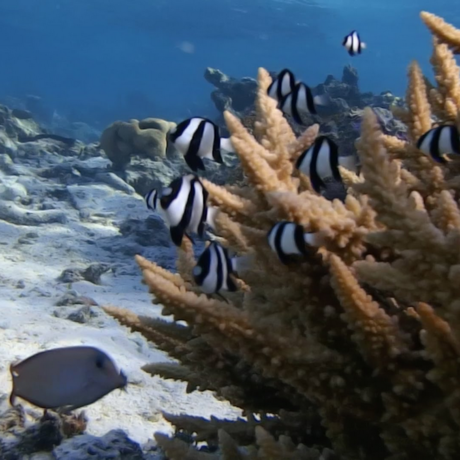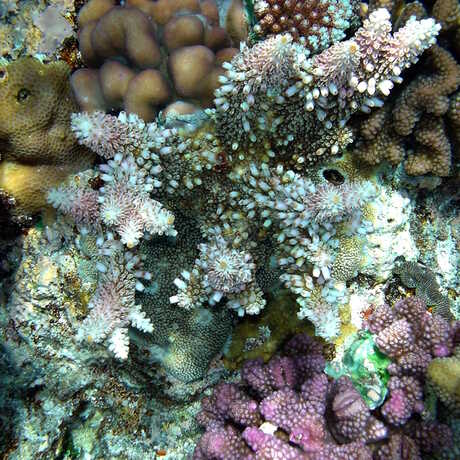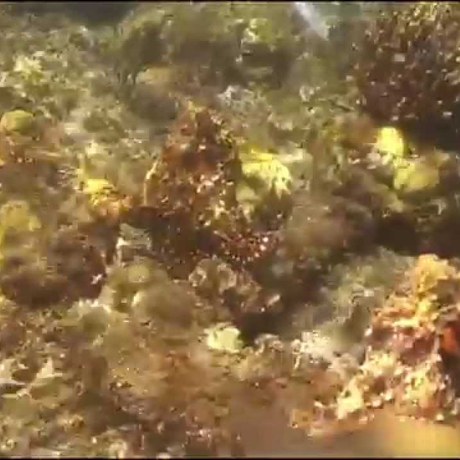Science News
Coral Resiliency
Coral reefs are under siege. These environments are in trouble from direct human impacts such as overfishing and pollution, but even more so from the indirect human impact of carbon emissions. These emissions not only cause ocean acidification which makes it difficult for corals to build their calcium carbonate skeletons, but just as carbon emissions warm the planet (climate change), they also warm the oceans, which causes corals to release the symbiotic zooxanthellae that give the animals their nutrition and coloration. This is called coral bleaching.
This past spring, the Great Barrier Reef experienced a bleaching event due to the warmer El Niño waters that likely killed 30 to 40 percent of the corals in the region. However, there are many hopeful signs that some of the corals that bleached will recover. The Academy’s Terry Gosliner has seen some of this coral resiliency first hand in the Philippines. In July of 2010, Gosliner was on a research dive in Thailand and witnessed a large amount of coral bleaching, which he wrote about for the New York Times. Colleagues told him it was happening throughout southeast Asia that year. In October of that same year, he headed to the Philippines, a place in the Verde Island Passage where he had been diving and working for 18 years, and for the first time, he witnessed massive bleaching there, too. “Some sites had 30 to 40 percent of corals bleached and other sites were much more pronounced,” he says, recalling that trip. And it wasn’t just the hard, reef-building corals that were bleaching. “Sea anemones, soft corals, anything with zooxanthellae was bleached.”
The Verde Island Passage is often called the center of the center of marine biodiversity for the species richness of corals and fish (and more!) that live in the region. So Gosliner and scientists around the world were incredibly concerned about the corals’ recovery.
When he went back to the Philippines three months later, Gosliner was expecting the worst when he got back in the water. Much to his surprise, most of the corals were already recovering from the bleaching. He had taken photographs of specific bleached coral heads that he went back to and found that they were completely recovered. When he returned again in May of 2011, had he not seen the bleaching the previous fall, he never would have noticed that anything had happened. And in several trips since, he’s seen virtually no signs of bleaching.
“There are lots of possible explanations,” he says, “but my hunch is that corals have the ability to bounce back.” Maybe it’s genetic, he explains, or the zooxanthellae are more resistant to bleaching. Perhaps the Verde Island Passage, with its deep channel and cold water upwelling, plays a role. He has seen more severe, prolonged bleaching nearby in shallower water.
Witnessing this resiliency, Gosliner is hopeful that reefs will recover in the Great Barrier Reef, too. But increasingly, in other places, he is less hopeful. “In the Caribbean,” he says, “there are two species of corals that have dominated reefs for 4,000 years, and now the animals have virtually disappeared.” It’s cascading events, he explains, nutrient pollution, overfishing, and human disturbance in addition to climate change, which brings the worst damage. “It is important we move toward energy sources that reduce our carbon dioxide emissions,” he urges.
“I have learned that nature is resilient,” Gosliner says, emphasizing his hope in the future. “But we must we change our habits very, very soon.”
Image(s): Corals and other animals in the Verde Island Passage, Terry Gosliner




